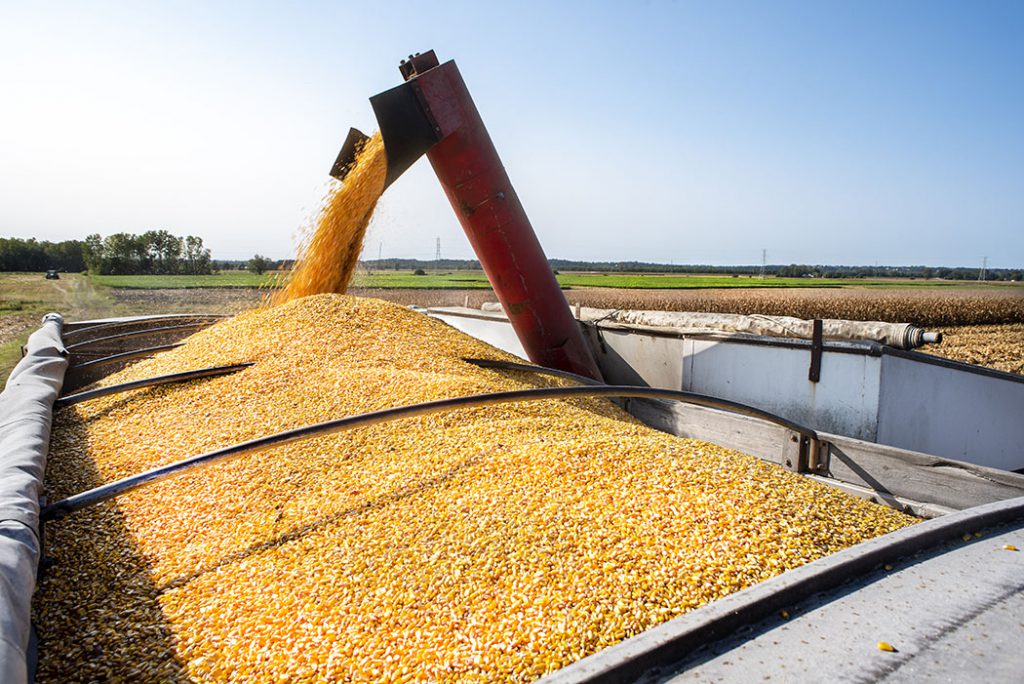Improving DON detection in harvested grain
GRINDER-BASED SYSTEM REDUCES VARIABILITY IN TEST RESULTS

VARIABLE AND INCONSISTENT DON test results from sampled truckloads at the elevator or end user are frustrating and problematic for farmers, elevators, and end users. This issue was particularly problematic during the 2018 harvest season. Since then, research has been conducted to determine how the testing procedure can be improved.
According to a recently concluded University of Guelph research project, the potential variability in mycotoxin testing could be significantly reduced at the elevator or end user by probing/selecting a two-kilogram sample, grinding the entire sample with a high-capacity grain grinder, and thoroughly mixing the entire ground sample before subsampling for the DON test. This will create a homogenized subsample that accurately represents the delivered grain.
SAMPLING CONCERNS
Mycotoxins are rarely distributed evenly in grain loads, and especially in a small sub-sample of grain; however, it was discovered that a two-kilogram probed sample represented the load well. It was found that very small subsamples from composite probed samples during the 2018 DON outbreak were generally the greatest source of variability in test results. Grinding the entire probed sample, then remixing the fine particles before taking the final sample for DON testing, reduced the variability in test results significantly.
As described in the final project summary, to get the two-kilogram sample, at least four pneumatic probes should be taken through the entire vertical profile of the load, from four different areas along its length. The study found that the composite sample retrieved from the multiple pneumatic probes represented the entire load better than expected.
BUILDING AN EFFECTIVE GRINDER
Prior to this project there were no readily available grinders which could efficiently and properly complete a two-kilogram sample process in a commercial elevator setting – at least, not at a reasonable price.
Led by Dr. Art Schaafsma at the University of Guelph Ridgetown Campus, the project’s researchers tried to remedy the problem by adapting an imported grinder to fit Canadian Standards Association requirements. The prototype was tested to ensure it could handle wet corn (up to 28 per cent moisture), and to determine any cross-contamination from sample to sample. The purpose was to use the prototype as an example of what elevators could use if they were looking to alter on-site testing systems.
Five of these prototype grinders were manufactured and distributed to grain elevators to evaluate their performance under commercial conditions – three Agris Cooperative locations at Stoney Point, Chatham, and Thamesville, and two Ondrejicka Elevators at Exeter and Lucan. Overall, the project report concludes the design provided consistent results across the five test locations.
Beatrice Wausi Gedion, a MSc graduate student involved in the project, confirmed the prototype grinder effectively managed both dry and wet corn samples with no, or an otherwise insignificant level of, cross contamination from sample to sample. Some training to effectively use such implements is required, however, as is an active cleaning (specifically vacuuming) regimen to perpetuate the low cross-contamination risk.
“The development of a high-capacity grinder does away with the need for a coarse followed by a fine grinding of the samples as done previously, hence saving time and costs.”
RESULTS
Dale Cowan, senior agronomist and agronomy strategy manager for Agris, says grinding a two-kilogram sample and appropriately mixing samples clearly reduced test result variability compared to grinding a much smaller subsample (which was the procedure previously used). Elevator operators do need to give some thought to how sampled material will be disposed – the grinding method produces a greater volume of waste corn – but the challenge is not a ‘deal breaker’.
“It showed us where the risks are and how to mitigate the risks. If we are all on the same page then the variability should be much less than what we saw previously,” he says.
As a result of this research, Grain Farmers of Ontario advises farmers to request that elevators follow this new protocol of grinding at least a two-kilogram composite sample from at least four probes per load prior to DON testing to ensure that more consistent DON test results will be obtained.
This project was funded in part through the Canadian Agricultural Partnership (the Partnership), a federal-provincial-territorial initiative. This project was also funded in part by Grain Farmers of Ontario. •
Look for the previous article on this topic: Storage flexibility in DON-infected corn






















